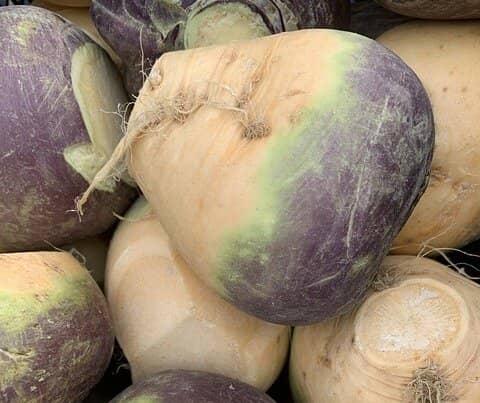Homeowners and gardeners spend countless hours caring for their property and ensuring it appears its best at all times. It’s plain to see that nothing accessorizes your home and garden better than a lush and green lawn. Fertilizing your lawn is one of the most important ways you can care for and protect it – whether you choose organic methods or commercial preparations, fertilizers influence the colour and richness of your grass, as well as its ability to recover from stress, and it helps prevent weeds and disease from ravaging your lawn.
So, how does fertilizer work?
Simply put: fertilizers work by providing essential nutrients to developing plants. They work as a kind of multi-vitamin or meal replacement for flowers, trees, fruits and vegetables. Many fertilizers also contain elements that will improve the way the soil works – either with particles like peat to help it to better retain water or vermiculite or perlite, which allow air to flow freely and help the roots get established.
Nutrients do occur naturally in well-maintained soils, but problems such as drainage issues can cause the nutrients to seep away into the ground water table. Adding fertilizer can be a way of giving nature a helping hand.
While many fertilizers are intended for general use, that are several formulations intended for use on a specific plant or species. This is important because different plants can require a careful balance of certain nutrients – if a general-purpose fertilizer was used on orchids, for example, the results could be disastrous.
Types of Fertilizer
While there can be several different formulations, there are two main types of fertilizer: organic or synthetic.
Fertilizers that are derived organically from animals or plants are made up of larger molecules, so it can take a long time for soil organisms to break them down so that they can be easily absorbed by plant roots. Organic fertilizers can include:
- Ash
- Blood meal
- Bone meal
- Compost
- Fish meal
- Manure (horse, chicken, etc.)
- Seaweed
Inorganic fertilizers are made from synthetic natural plant materials or natural chemicals that are mined, and they are typically faster-acting than organic fertilizers as they’re more concentrated. Synthetic fertilizers could contain elements such as:
- Phosphate
- Sulphate of Ammonia
- Sulphate of Potash
- Superphosphate
Are there drawbacks to using fertilizers?
It’s clear that fertilizers provide a host of benefits to our plants – in fact, it’s thought that as much as 30% – 50% of our crop yields are a direct result of these additives – but are there any reasons to exercise caution with fertilizers? There must be some negatives, right?
The largest drawbacks are typically caused by inexperience; for example, if a fertilizer is used incorrectly or at a higher consistency than recommended, it can cause damage to the plant, similar to a chemical burn. And while most established plants typically recover well from this type of mistake, younger, more fragile ones may not.
Some inexperienced gardeners might also think that adding fertilizer will take care of all their plant’s needs. But just like humans and other animals, plants also need a balanced diet as well as a number of other elements to be able to grow to the best of their ability. Well-maintained soil that contains worms and insects is essential as it maintains the moisture and oxygen levels around the roots and produces organic matter to help enrich the growing medium.
As with all additives, when it comes to fertilizers, less is often more – and it’s all about getting the right balance for your plant.
How does fertilizer work on grass?
As longs as you apply the right kinds of fertilizer at the right times, it will make your lawn greener and your grass stronger. Plants can require over a dozen nutrients in order to grow correctly, but they require the largest amounts of nitrogen, phosphorous and potassium – so much so, in fact, that they often require supplementing with fertilizer.
Fertilizing your lawn correctly will increase the level of chlorophyll production and strengthen the roots and stems, leading to a beautiful, healthy-looking expanse of grass. Each variety of grass may need a slightly different fertilizer formulation to reach its peak growth and health levels – and shady areas may require different fertilizers than sunny spots.
How to fertilize your lawn
Ideally, you should fertilize your lawn just before the peak growing phase. For warm-season grasses, this will be in late spring or early summer with a second application in late summer – if your grass goes dormant over the winter months, don’t fertilize after the end of August.
Always follow the manufacturer’s recommendations for application. Generally, it’s best to water your lawn thoroughly a day or two before applying fertilizer – or just apply a day or so after a good rainfall. When fertilizing with powdered or granulated mixtures, it’s always best to use a spreader and to move across the turf in a pattern with slightly overlapping edges so that you ensure the most even coverage of the whole lawn. Then lightly water the whole area again, which will wash the fertilizer off the grass blades and into the soil.
Try to avoid fertilizing if heavy rains are forecast – otherwise, all your hard work may just wash away; you should also skip fertilizer during periods of drought send the lawn is brown or withered – you may cause more harm than good if the chemical burn the grass.
What makes up fertilizer?
Most commercial fertilizers have 3 ingredients – nitrogen, phosphorus and potassium. Some companies add trace amounts of other important nutrients such as zinc, magnesium, calcium, sulfur, or iron (which they will list on the packaging) – and some formulations will contain only one of the primary nutrients.
Generally, a large portion of bagged fertilizers is made up of filler. This prevents the chemicals from scorching the grass, and this is why most liquid fertilizers – which are more concentrated – should be mixed with water before or during application.
There are also a variety of special lawn fertilizers:
- Winterizing fertilizers are typically high in potassium, and although they’re usually advertised for fall application, they can be applied in spring as well because potassium is used all year by grasses, and is involved in heat and cold tolerance, disease resistance, and other stress tolerances.
- Some weed and feed products contain a broadleaf weed killer for weeds such as dandelions and are used in fall applications
- Others contain a preemergence herbicide to control crabgrass when applied in the spring
- Lawn starter products are typically high in phosphorus and are intended for newly seeded lawns or fresh-laid sod.
Why are there different numbers for fertilizers?
Commercial fertilizer producers use a 3-number system to identify the ratio of each nutrient they contain – and those few mixtures that contain a fourth nutrient in trace amounts (which may change according to the fertilizer’s intended application), have a fourth number on the packaging.
The (first) three numbers on a container of fertilizer stand for the amount of nitrogen, phosphorus, and potassium in the mixture (N-P-K) – for example 10-10-10, or 20-0-10.
The numbers represent the percentage (by weight) of each nutrient the fertilizer contains – and the higher the number, the more concentrated the nutrient will be within the fertilizer.
A fertilizer with a 15-15-15 ratio has equal amounts of nitrogen, phosphorus, and potassium with 15% of its total content being comprised of each nutrient – which means that the remaining 65% of the package is filler.
A fertilizer package showing 21-7-14 will contain 3 times as much nitrogen as phosphorus and twice as much potassium as phosphorous – it could be simplified as 3-1-2.
The fertilizer numbers on the packaging can also be used to calculate the amount of fertilizer needed to add a pound of each of the listed nutrients into the soil. There are a couple of ways to do this:
Because these are listed as percentages, you can simply divide 100 by the number in the N, P, or K position to calculate how many pounds of fertilizer will be needed to increase that nutrient level in the soil by one pound.
Typically, one pound of nitrogen per 1,000 square feet is suggested for each fertilizer application to the lawn. So, if a high-nitrogen fertilizer is used, then less actual product is needed to supply that one pound compared to fertilizers that have a lower percentage of nitrogen.
Also, if you purchased a 50-pound bag of 21-7-7 fertilizer, you could multiply 50 by .21 to determine how many pounds of nitrogen it contains, and multiply 50 by .07 to determine how much phosphorous and potassium it contains. The bag will have roughly 10.5 pounds of nitrogen and 3.5 pounds each of phosphorous and potassium; the remaining 32.5 pounds is filler.
Which nutrients are most important in a grass fertilizer?
While many all-purpose fertilizers contain equal amounts of the 3 main nutrients, the N-P-K rating that is best for established grass is typically high in nitrogen and low in both phosphorus and potassium.
However, a new lawn needs less nitrogen and large amounts of both phosphorus and potassium while newly-laid sod should contain a lot of phosphorus and potassium but very little nitrogen – or none at all.
Nitrogen
Nitrogen is essential to the health of all plants because it’s a core component of the plant structure and is vital to its metabolic processes, such as photosynthesis. Soil cannot typically provide enough nitrogen to nourish plants without the addition of organic matter or other fertilizers – it’s a component that is far too easily flushed from the soil and into the water table.
Nitrogen is one of the most essential elements of all the amino acids in plant structures; these are the building blocks of plant proteins. They are important to the development of plant tissues such as the cells, membranes, and chlorophyll. Nitrogen is also a factor in the development of DNA, which contains the genetic blueprint of the plant – it’s a component of nucleic acid.
Plants with sufficient levels of nitrogen experience higher rates of photosynthesis, and will typically grow and develop vigorously. It provides essential nourishment for the growth of foliage – which on your lawn means that it will help produce lush, tender blades of deep green grass.
Grass that is nitrogen-deficient will appear more yellow-green and grow slowly, or not at all.
Different Types of Nitrogen
When choosing your lawn fertilizer, it’s also important to consider the type of nitrogen that each product contains: fast-release or controlled release.
Most water-soluble nitrogen formulations – such as urea, ammonium nitrate or ammonium sulfate, are fast-releasing. While they are fairly inexpensive and work well on cold soils, leading to quick greening – they may cause an undesirably large flush of growth and can burn grass if not properly watered-in. They are also easily lost through evaporation or leaching.
Many experts claim that it’s best to stick to controlled release, water-insoluble nitrogen formulations and products such as ureaform, or organic sources like alfalfa or seaweed or even manure.
Phosphorus
Like nitrogen, phosphorus is an essential nutrient to plant structure and is behind many of its biochemical reactions – especially photosynthesis. It’s also a crucial element for both DNA and RNA, the compound that reads the genetic code of the plant.
Phosphorus is also a central component of ATP, which forms during photosynthesis and provides energy to the plant from the very beginning of seedling growth through to maturity.
This means that, while phosphorus improves the overall crop quality and supports plants throughout their life cycle, its primary role is to stimulate root development, and to speed the maturity of the plant.
Because phosphorus can also aid in the development of flowers, fruits or seeds, which are not so desirable on the lawn – that is why the phosphorus content of lawn fertilizers is typically low.
Unlike nitrogen, phosphorus remains in the soil and doesn’t wash away easily during waterings or rainfall. The signs of phosphorus deficiency may not be easily spotted: the growth rate of the grass will be quite slow and the blade height could be stunted; you may also spot purplish discolorations on the blades or leaves.
Potassium
This essential nutrient contributes to the proper growth and reproduction of plants; it helps to activate growth-related enzymes in plants which strengthens the cell wall structure, leading to stronger stems – but it also has several other roles.
Potassium regulates the uptake of carbon dioxide during photosynthesis. It also triggers the enzymes involved in the production of ATP as well as the synthesis of proteins and starches.
Potassium also helps to regulate the level of water in the plant, affecting both the uptake of water by the roots and its loss through evaporations; it can therefore improve a plants tolerance to changing weather conditions or drought.
While potassium can leach from the soil, it remains in place longer than nitrogen will. If your grass is lacking potassium, the stems will seem weak and may bend or break easily; the growth rate will also slow down.
Further reading:
- http://www.garden-counselor-lawn-care.com/fertilizer-numbers.html
- https://homeguides.sfgate.com/long-can-fertilizer-sit-yard-water-89554.html
- https://web.extension.illinois.edu/lawntalk/planting/choosing_fertilizers_for_home_lawns.cfm
- https://www.diynetwork.com/how-to/outdoors/landscaping/14-tips-for-fertilizing-your-lawn-pictures
- https://www.hunker.com/12478933/what-does-fertilizer-do-to-grass
- https://www.hunker.com/13404881/how-long-does-fertilizer-take-to-work-in-the-grass
- https://www.lovethegarden.com/uk-en/article/how-does-fertilizer-work#:~:text=Fertilizers%20work%20by%20providing%20essential,which%20is%20good%20for%20roots.
- https://www.ncagr.gov/cyber/kidswrld/plant/label.htm



